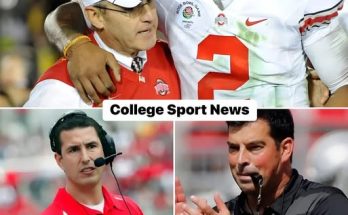The case involving Kansas City Chiefs wide receiver Rashee Rice has garnered significant attention not just because of the high-profile nature of his position in the NFL, but also because it highlights deeper discussions about accountability, responsibility, and the pressures faced by young athletes elevated to stardom. Rashee Rice, who first made his name on the collegiate stage at Southern Methodist University (SMU), pleaded guilty to charges stemming from a high-speed crash in Dallas in 2023. The incident and its aftermath not only placed Rice in legal jeopardy but also initiated a broader conversation about conduct, image, and personal growth. For many fans and observers, this case serves as a lesson in decision-making, consequences, and the long road to redemption.
Born and raised in the Dallas area, Rashee Rice was no stranger to the streets where the fateful crash occurred. He was a standout at Richland High School before eventually committing to play for SMU, where he would go on to become one of the program’s most prolific wide receivers. Rice’s rise was meteoric; he led the nation in receiving yards for much of his final collegiate season and showed an impressive blend of athleticism, football IQ, and route-running prowess that eventually made him a sought-after NFL prospect.
His transition to the NFL with the Kansas City Chiefs was marked by promise. Playing alongside elite talents like Patrick Mahomes and Travis Kelce, Rice was seen as a key component of the Chiefs’ offensive plans moving forward. In his rookie season, he demonstrated flashes of brilliance, hauling in important catches and solidifying his role in the team’s high-octane offense. However, beneath the surface of football success, there were choices being made that would eventually cast a shadow over his emerging career.
In March 2023, reports surfaced of a high-speed, multi-vehicle crash on North Central Expressway in Dallas. According to law enforcement accounts, the crash involved a Lamborghini and a Corvette, both allegedly racing at speeds exceeding 110 miles per hour before colliding with several other vehicles. The impact led to multiple injuries and significant damage. While initial confusion surrounded who was involved, investigations eventually led police to Rashee Rice as one of the central figures in the case. Surveillance footage, eyewitness testimony, and Rice’s own admission pieced together a troubling picture.
The gravity of the charges was not lost on those following the story. Reckless driving, racing on a highway, and causing bodily injury were among the allegations. In Texas, these are serious charges that can carry significant legal penalties. After months of legal proceedings and plea negotiations, Rashee Rice ultimately pleaded guilty to a combination of charges, including aggravated assault and collision involving serious bodily injury. In doing so, Rice accepted responsibility for his actions, albeit as part of a plea deal that may reduce his sentence.
The legal outcome, while important, only tells part of the story. What resonates more deeply is the impact this incident has had on the lives involved, including the victims, Rice himself, and the broader community. Several people were injured in the crash, and the emotional and physical toll on them remains immeasurable. For Rice, the consequences extend beyond the courtroom and into the very fabric of his career and reputation. While the NFL has yet to hand down any formal suspension or punishment, league precedent suggests that some disciplinary action is likely.
From an educational perspective, this case underscores several critical issues that go beyond sports. First, it speaks to the importance of understanding the immense responsibility that comes with fame and success. Professional athletes, particularly those as young and visible as Rice, are thrust into the spotlight and often idolized by fans. That pedestal comes with expectations—not just of performance on the field, but of conduct off it. The decision to engage in street racing, whether out of thrill-seeking, peer pressure, or arrogance, reflects a momentary lapse in judgment with life-altering consequences.
Secondly, the incident prompts a closer examination of how young athletes are prepared for the challenges of fame. Colleges, professional leagues, and team organizations do offer developmental programs meant to educate players about financial literacy, media training, and legal awareness. However, these programs, while well-intentioned, are not always effective. The transition from a college athlete to a millionaire professional in a matter of months is profound, and not every player is equipped to handle it. There’s a growing call within the sports community for more robust mentorship systems, where seasoned veterans can help younger players navigate the pitfalls that come with sudden fame and fortune.
Additionally, Rice’s case reveals how the justice system often interacts with celebrity. In many high-profile cases involving athletes, outcomes vary widely depending on public perception, legal resources, and plea arrangements. Critics argue that wealthy individuals may receive more lenient sentences or favorable terms because of their ability to afford elite legal representation. Others point out that public figures also face an amplified level of scrutiny and reputational damage that can be more punishing than the court’s ruling itself. The balance between fairness, accountability, and rehabilitation is a delicate one, and Rice’s case will likely continue to be a reference point in these debates.
Another layer to this discussion is the role of fan culture. Chiefs fans were understandably concerned—not just for Rice’s availability on the field, but for what this meant for the integrity of the team. In recent years, sports franchises have been increasingly scrutinized for how they respond to off-field conduct by their players. The Chiefs, an organization that has both been praised and criticized for various player decisions in the past, must now navigate the public relations aspect of supporting a young player while acknowledging the severity of his actions. It’s not an easy line to walk. Statements of support must be measured, and any attempts to downplay the incident could result in backlash. On the other hand, throwing Rice under the bus would ignore the human side of what is clearly a painful and complex situation.
It’s also crucial to consider the role of accountability in personal growth. Rashee Rice’s guilty plea, while not erasing the harm caused, represents a step in the direction of acceptance and ownership. That step opens the door for redemption, assuming it is followed by genuine remorse, restitution, and a commitment to change. The road ahead for Rice will not be easy. He will have to rebuild trust—not only with the fans and the Chiefs’ organization, but with the public at large. That process involves more than just public apologies; it may include community service, public education campaigns on reckless driving, and personal engagement with the victims of the crash.
Moreover, young athletes can take Rice’s experience as a cautionary tale. The allure of fast cars, late nights, and adrenaline-fueled decisions often collides with the reality of consequences. High-speed driving on public roads is not just illegal—it is deeply irresponsible, putting lives at risk with every throttle. For aspiring athletes, understanding that talent does not make one immune to the law is a fundamental lesson. In fact, with visibility comes greater accountability. A single mistake, even one that seems momentary, can forever change the trajectory of a life and career.
In the broader cultural context, the Rashee Rice case taps into America’s long history of both celebrating and scrutinizing athletes. Sports figures are among the most idolized individuals in American society. They serve as role models, cultural ambassadors, and sometimes cautionary figures. When they falter, the public watches not just with disappointment, but with fascination. This duality—admiration and condemnation—is part of the complex fabric of sports culture. For every story of triumph, there is often a story of trial, and Rice’s case is firmly planted in the latter for now.
While it remains to be seen how the NFL will respond and what kind of sentence Rice will ultimately serve, the hope is that this incident becomes a pivot point rather than a defining endpoint. Redemption in professional sports is not unheard of. There are numerous examples of athletes who made serious mistakes, served their time, and returned to both their sport and their communities as better, more reflective individuals. But that path requires humility, a willingness to change, and consistent effort over time.
For Rice, the focus must now shift from damage control to meaningful transformation. Legal penalties are finite—public perception and personal integrity are far more enduring. His journey from here could become one that inspires, provided he treats this moment not as a footnote but as a turning point. How he responds, how he uses his platform going forward, and how he addresses the pain caused by his actions will determine whether he is remembered as just another talented athlete who squandered potential or as someone who faced adversity, owned his missteps, and used them to fuel a more responsible and impactful life.
In closing, the story of Rashee Rice is far from over. It is a living example of the complexities of modern sports culture, the consequences of poor decisions, and the enduring hope for redemption. It reminds us that athletes are human—flawed, vulnerable, and capable of both greatness and failure. But more than that, it challenges us all to think deeply about the choices we make, the lives we affect, and the kind of legacy we hope to leave behind.



